In the previous post on data slides it was highlighted that
“Data slides must be easily interpreted, memorable and clear. Few are. Most could be improved.”
A data slide in a presentation cannot merely a representation of a table from the scientific document, it must be engaging, memorable and clear. Psychological evidence suggests that an image such as a data slide must be interpretable within three seconds otherwise attention will be diverted from the speech to assessing the “image”. The quasi evidence for this is advertising billboards that can be viewed by passing traffic. More than three seconds means the attention and message will be lost. The same applies to a data slide.
Using the scientific paper on CRASH-2 (use of tranexamic acid in trauma) as an example the following data slide examples have been constructed. They highlight principles that are effective. Other techniques and opinions are available!
- Data tables from a paper do not function as data slides in a presentation
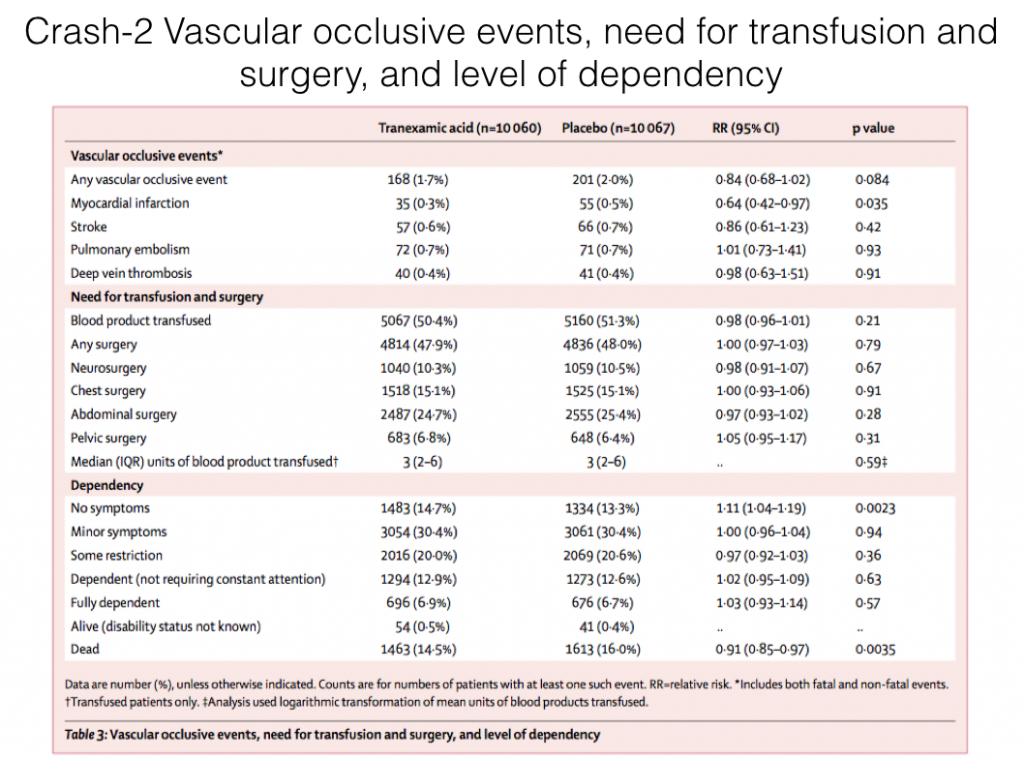 Remember the issue of presentation screen and auditorium size, it is exceptionally unlikely that this will even be legible to the majority of the audience. The data is so complex that it will distract the audience. Even now you are trying to read and interpret the data. There is no place in a scientific presentation for an image such as this, improve it.
Remember the issue of presentation screen and auditorium size, it is exceptionally unlikely that this will even be legible to the majority of the audience. The data is so complex that it will distract the audience. Even now you are trying to read and interpret the data. There is no place in a scientific presentation for an image such as this, improve it.
2. Highlighting and apologising aren’t magic
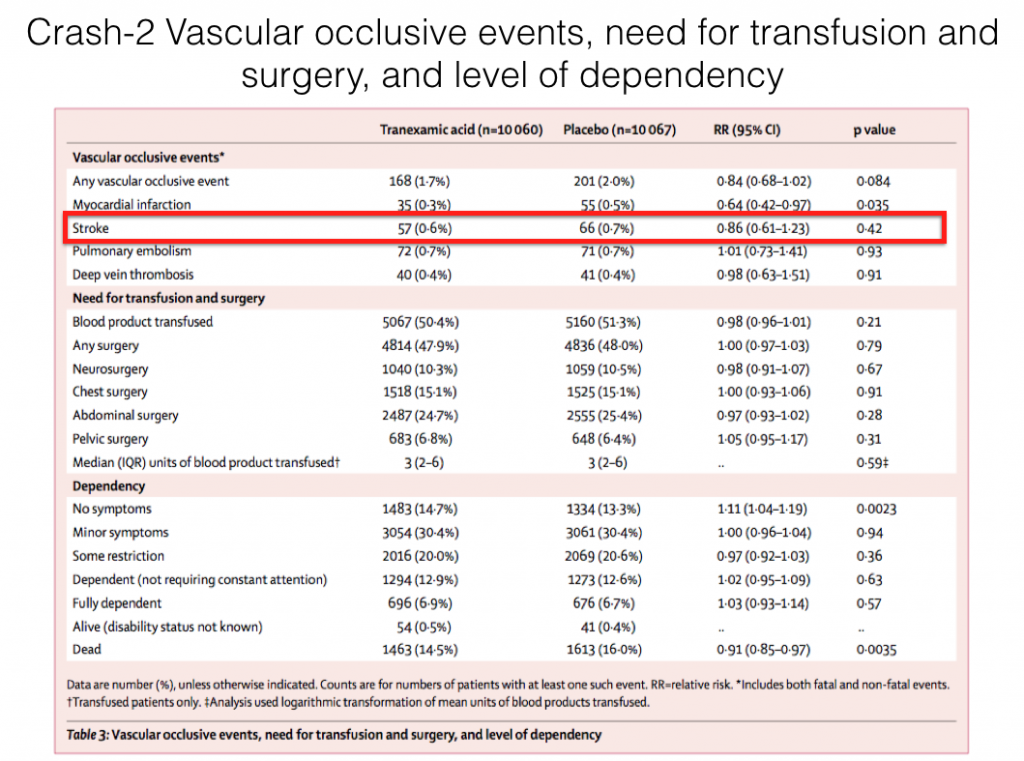
Neither use of a red rectangle nor a laser pointer will clarify meaning in such a complex slide. If the data is not visible, there is no magic effect surrounding or underlining this in red. Worse still is the standard apology for “the busy slide.” Apology for the illegibility will not ameliorate the situation either. Improve the data slide.
.
3. Have a single message per slide
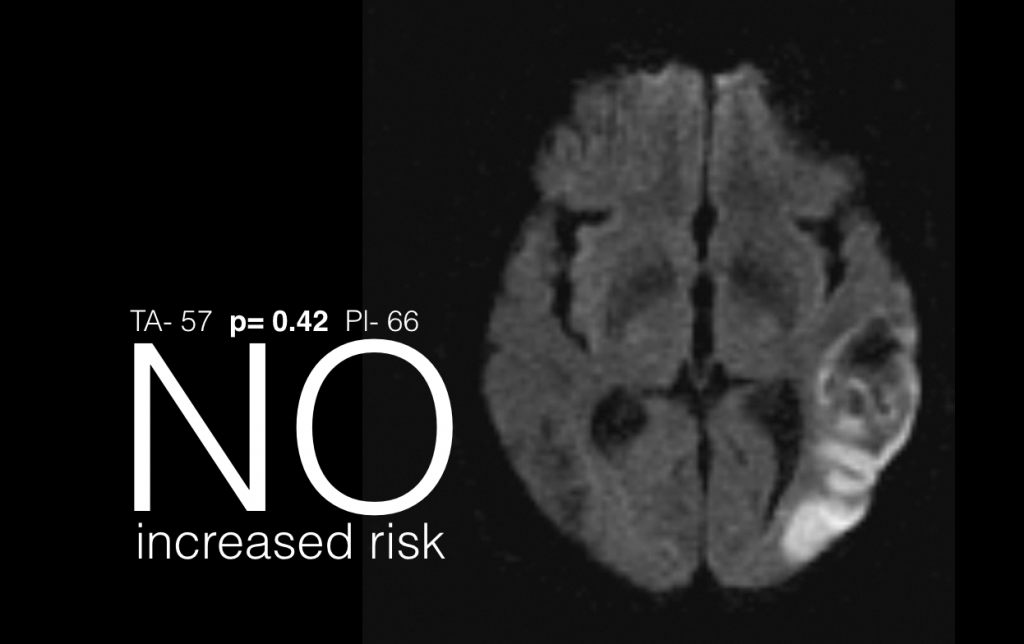
Construct a slide for each single data point that requires emphasis or explanation. It is important to re-state that a presentation is not the forum to saturate the audience with data, rather to concentrate on the message (p1) for the specific audience and illustrate that appropriately. In this example, if the segment being discussed is risk of stroke within the study group, this is best illustrated with a single, easily interpreted, memorable and clear slide. Images convey deep meaning and simple phrases overlaid give clarity.
4. Use repetition to enhance memorability
The study in question is scientifically important in that the drug and placebo groups were found to be statistically the same. This fact can be repeated verbally but also by the repetition of the format and numbers within each section of the presentation.
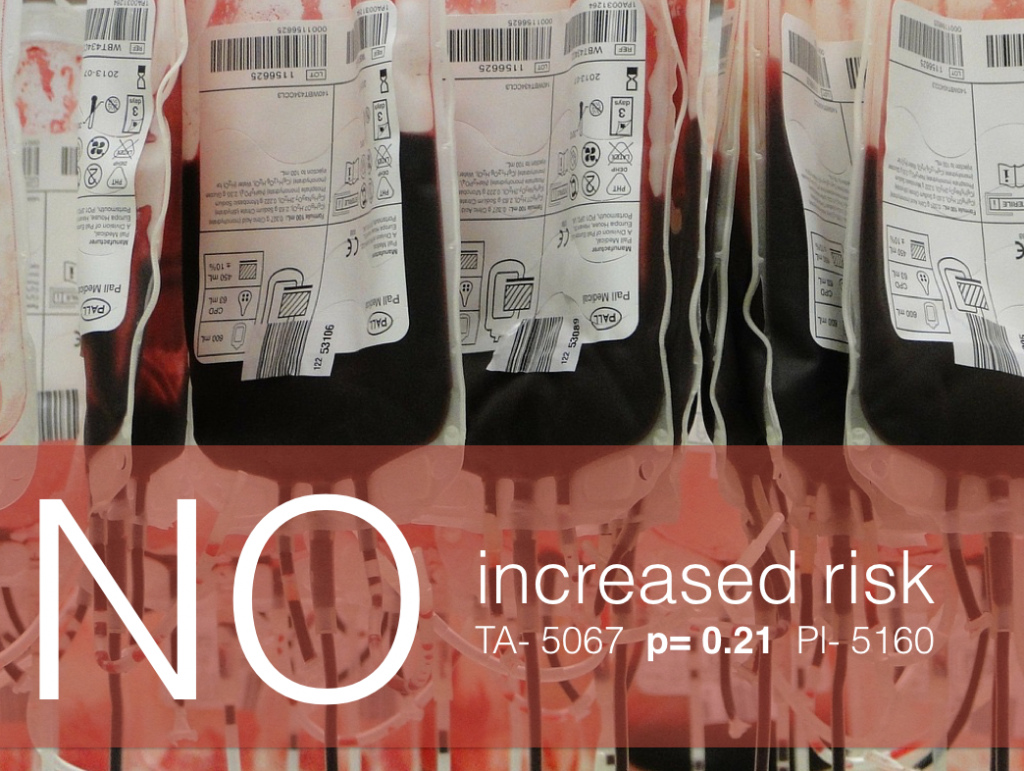

5. Simplify data by explaining it

A graphical representation of numbers is more easily grasped. Comparison of the surgical interventions undertaken in the two arms of the study is often represented currently by pie charts. This is simply fashion and unhelpful as it is not possible to gauge degrees of an arc accurately. Bar graphs are more effective. To further improve the visual impact ensure that differentiation is easily made between the two groups by using colour, particularly to highlight the study group compared to the control and give the slide a title that explains the findings. It is visually appealing to use horizontal bars for size and to rank in decreasing order. Note once again the repetition of format.
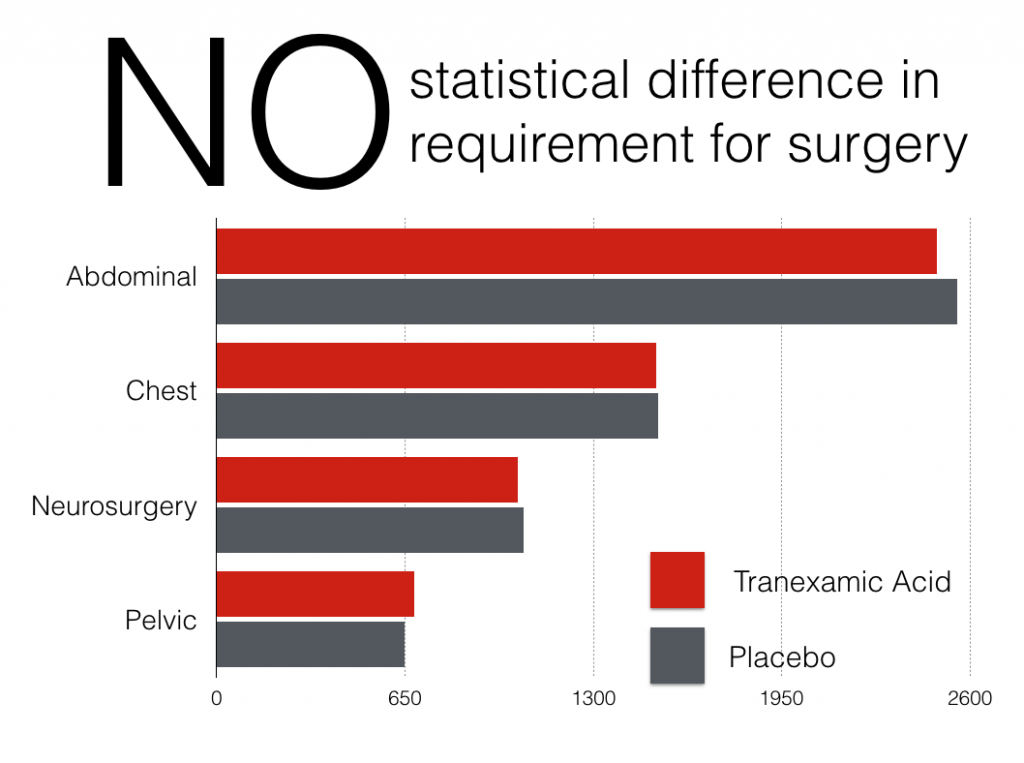
Data slides must be easily interpreted, memorable and clear. Simple design rules can achieve this such that the single message of a section is readily available and the audience is not distracted by diverse information not pertinent to the message being delivered at that point. As an example, is there increased risk of acute haemorrhagic stroke with the use of tranexamic acid? Which slide made that clear to you? Clear data slides are not simplistic, not patronising to the audience and not about dissembling; they are about maintaining clarity and retention of message.
Pingback: Data slides (2) – Global Intensive Care
Pingback: Länkar v16 | Internmedicin